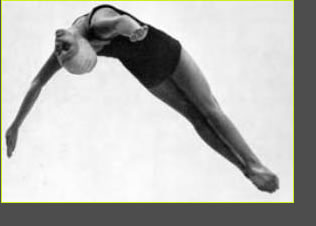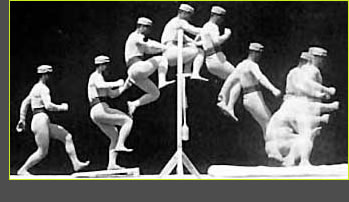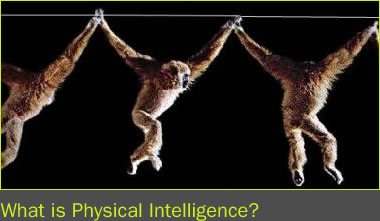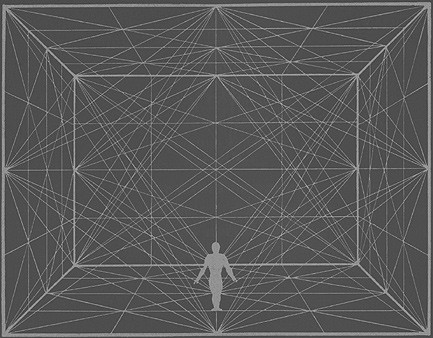Course Description
Physical Intelligence classes take an experiential approach to the investigation and application of our innate ability to learn physical skills. Philosophically, the curriculum is founded on the premise that physical education is more than strength training, flexibility and aerobic fitness; physical education is also the development of our ability to access and benefit from the physical intelligence of the human organism.
The core of the Physical Intelligence program is a three-semester curriculum that uses the MIT gymnastics gym as a laboratory to introduce and develop physical intelligence, and then to apply the experience to academic pursuits. Selected readings and discussions combine with experience-based learning leading not only to the development of balance, agility, flexibility and strength, but to a deep appreciation for the reciprocity of mind and body that suggests physical intelligence as a powerful complement to cognitive intelligence.
Syllabus
Introduction


In the research that takes place at MIT the body is present as an object of study but is all but unrecognized as an important dimension of our intelligence and experience. Yet the body is the very basis of our experience in the world; it is the very foundation on which cognitive intelligence is built. Though we appear to move beyond such physical learning early in life, our thinking, learning and understanding are constantly referencing this experiential base, aptly reflected in the Mens et Manus motto of the Institute.
What is Physical Intelligence?

From the extraordinary performances of Olympic athletes to simple, everyday actions such as standing and walking, all of our movements depend on an ongoing process of spatial orientation, organization in relation to gravity, proprioception, and sensory perception. Physical Intelligence, then, is this remarkable coordination of intention, muscle, motor and sensory/perception systems functioning in extraordinary accord with the environment—embodied mind in action.
Orientation in Relation to Gravity: Balancing & Standing
Before you take a step or raise an arm, your body has already anticipated the shift in your center of gravity and made countless tiny adjustments to help you maintain your balance. These “pre-movements” are what keep you from tumbling forward reaching for a glass, or falling when you turn suddenly upon hearing your name. Patterns of preparatory movement organize your orientation to gravity, and set the tone for all other, more complex actions. This week we will explore the individual strategies each of us employs to establish our highly refined and subtle rapport with gravity.
Investigations and Activities:
· Meeting Gravity
We will take advantage of DAPER’s high-speed imaging system to reveal the subtle premovements that keep us in balance.
· The Art of Falling
A 40 foot padded incline allows us to play the line between balance and falling. Again, high-speed video will afford a detailed look at the elaborate compensatory dance the body does to maintain its balance under such extreme conditions. The best stumble wins.
Perception
Perception is the basic language of physical intelligence. When we sit, stand, reach, or run to kick a ball, it is sensory information that guides our movement. Conversely, action underlies perception: we move our fingers to touch; we turn our heads to catch a sound or to see. Sensory perception can actually be considered simulated action based on physical experience: to see a chair is to imagine the action of sitting in it. As Merleau-Ponty said, “vision is the brain’s way of touching.” And, we might add, touching is one way the body sees. Sensing and motor skills are in constant conversation with each other. The organization of our movement patterns depend upon our habits of perception. How, then, might an education of the senses be included in physical education?
Investigations and Activities
· Mapping Perception
Students spend an hour blindfolded in an open field. Turning off the eyes, our project is to notice the rich array of sounds, smells, textures in which we are constantly immersed but tend to ignore. Following, we will each create a sensory map of the experience that we will use to compare and contrast our experiences.
Proprioception: Locating Oneself from Within
While we see, touch and hear the world around us, there is also the process locating ourselves from inside. This manifests primarily as a sense of our weight and perceived boundaries defined by where skin meets world. Sensations from the skin, from muscles and bones make up the “somatic self”, telling us where we are and where we end. Antonio Damasio theorizes that a large part of what allows us to feel like the same person from day to day is the sameness of these signals from the body day after day; “somatic markers” tell me that I am still “me”.
Most of us have only a vague sense for our physical selves on this level. Yet, as a key dimension of physical intelligence, proprioception can be cultivated. Furthering our work from Week 3, we will excavate these perceptions to gain an appreciation and awareness for our “inner” sense of a physical self.
Investigations and Activities:
· Exploring a Sense of Weight
From a collection of materials (e.g., foamcore, wood dowels, inflatables) we will build wearable structures to alter our body’s sense of weight, relative position and scale.
Spacial Perception
Locating ourselves in space is the other side of our physical sense of self. Using primarily sound and vision, we orient ourselves to the world around us. Using our physical sense of self as our point of reference, we construct the spatial relationships we see. This is the threshold or interface where our “inner” world of perceptions meets an “outer” world. Movement is organized and reorganized based on these relationships. Physical intelligence, then, is the fluency with which we conduct this kinesthetic conversation.
Investigations and Activities:
· Spatial Perception: Our Sense of an “Outside” World
In this exercise we employ body-mounted lighting instruments such as laser pointers and LEDs in a black box performance space to give new meaning to our changing relationship to the space around us.
· Fieldtrip:
We will visit Brandeis University’s Volen Center for Complex Systems:
Human Spatial Orientation and Motor Control.
Complex Coordination
Walking represents an extraordinarily complex coordination of actions, delicately tensioned between balancing and falling. Once mastered, we walk with hardly a thought-on varied terrain, at different speeds, while carrying heavy objects, and in conversation with others.
In walking, the entire body-head, spine, torso, arms, legs, hands and feet work together in rapport with the physical conditions-gravity, ground, spatial relationships-to propel us forward. Contrary to conventional understanding, it is not the skeleton that walks, but a whole-body web of tissue, stretching and contracting to harness the potential energy available. Physical intelligence coordinates this complexity. With so many variables, many strategies are possible. Thus, the pattern and rhythm of our gait is highly individualized. And, though locomotion can be nearly effortless, we can and do get in its way.
Week 6 we will experiment with the biomechanics of walking, looking specifically at the contribution of legs, arms and spine to see if we can experience what seems a mundane activity in new ways.
Investigations and Activities
· Walk This Way
Using LED target markers on the body for reference points, high-speed video and movement analysis software allows us to distill the individual characteristics of each person’s gait. With this information, we will experiment with the range of movement patterns revealed to gain perspective on our individual strategies.
· Field Trip
A visit to MIT’s Leg Laboratory to compare and contrast the physical intelligence an organism demonstrates against that of artificially intelligent machines.
Learning and Development: The Basic Elements of Movement
The basic grammar of human movement begins before we are born. In utero, tiny undulations from head to tail begin the complex coordination of motor skills that will so occupy an infant and toddler as he or she learns to negotiate the world. Watching a child learn to walk is testament to the physical intelligence–and persistence, of the system as trial and error establishes skill. Further, physical play in childhood greatly expands our range and repertoire, as every aspect of our balance, coordination, and motor skills is challenged. Here, a vocabulary of fundamental movement is developed that serves us for a lifetime-from everyday activities to Olympic level performances.
Investigations and Activities
· Field Trip
A visit to the MIT day care to watch babies work to become toddlers.
· A World of Objects
Curiosity about the world motivates movement; our early interaction with objects forms basic gestures-reach, push, throw-structures the basic grammar of movement. We will explore simple movements in relation to objects to discover how they underlie more complex ones.
E-motion
Walking a 4 inch beam, 50 feet in the air is no easy task. Below a level of conscious awareness, the brain is constantly responding “emotionally” to the world. Before we are even aware of feeling afraid, for example, physical responses have already begun: pounding heart, sweaty palms, tense muscles. The physical sensations in turn tell us what we are feeling. This is yet another aspect of physical intelligence, or communication with our organism. Such reactions have their roots in human evolution, but may not be completely adapted to the lives most of us lead. A fear of heights and performance anxiety are more obvious “outside” threats. However, we can experience poor perceptual orientation or being off balance, as “danger,” creating muscle tension and restriction that greatly affects how we live our body.
As experienced in previous classes, we can learn to become aware of such automatic/autonomic processes. In this class we will experiment with situations that bring these responses into awareness. Our effort will be to understand both their affect, and how we can better work with such powerful influences.
Investigations and Activities
· Fear Factor
Walking a 4 inch beam, 50 feet in the air, among other ropes course activities.
“Tooling”
Your body is your first tool. Before language or concept, learning is a physical process built upon the interactions of body and world; eyes and hand reach into the world, our legs transport us. Inversely, tools are extensions of the body, born of its interaction with the physical world; a hand becomes a hammer, bipedal action becomes a bike. Even when we consider information technologies, we must ultimately look to the physical experience of the body in its context for the roots of such machines. As the basis of our experience, the body is present-often visible-in all that we create. The body and the tools it creates, then, are manifestations of our physical intelligence.
Investigations and Activities
· Technological Innovation: Physical Problem Solving
From a large collection of materials students will be challenged to design and build tools to solve fanciful technology-minded, body-based problems, e.g., “be here and there at the same time.”, “walk standing still.”
“Flight”
“Air” Jordan, Wonderwoman, Baryshnikov, or simply a child’s leap from a swing set; what is the perennial appeal of defying gravity, if only for a moment? From high-level athletes who make it look effortless, to the aspirations underlying the space program, human beings are constantly teasing the limitations of the body and of our physical condition. In our final week we will use “flight” as a vehicle to overview the cultural tension between the body and the passion of our scientific/technological pursuits.
Investigations and Activities
· A Thousand Words
To make a concept map illustrating connections between our scientific/technological society and our effort to transcend the limitations of our physical condition, we will pour through recent issues of Wired, Technology Review and other magazines in search of telling images (what they have to say may surprise you!).
